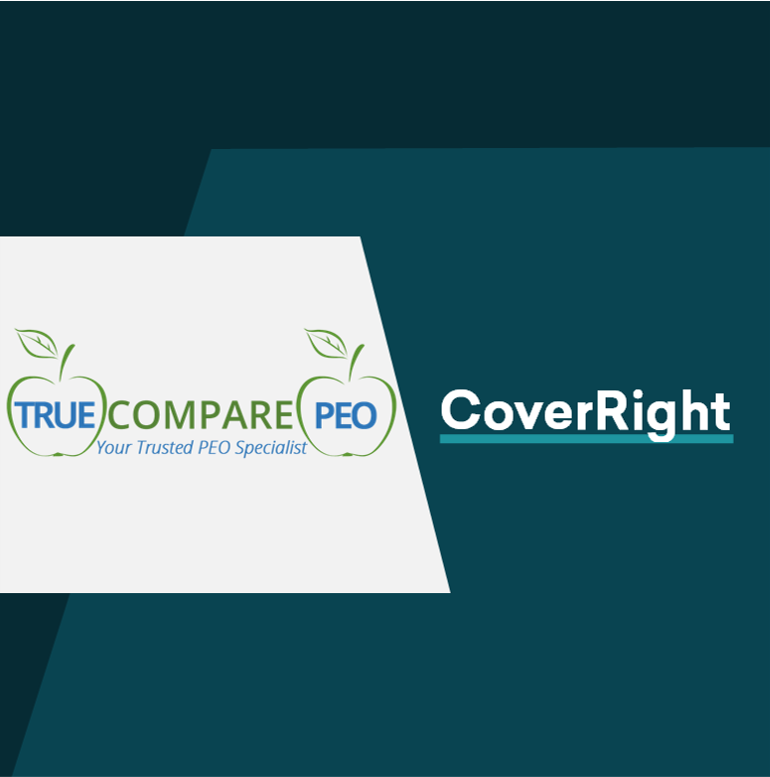What is Medicare Part C (Medicare Advantage)?
Medicare Part C, also more commonly known as Medicare Advantage, is a bundled “all-in-one” alternative way to receive Medicare coverage.
In 2022, slightly more than one-third (26 million people) of all Medicare beneficiaries in the U.S. were enrolled in Medicare Advantage plans. It is also quickly becoming a popular choice with around 2 out of 3 new enrollees picking Medicare Advantage to receive their Medicare coverage. The Congressional Budget Office (CBO) projects that Medicare Advantage enrollment will continue to grow over the next decade, with plans covering an estimated 51% of beneficiaries by 2030.
Medicare Advantage plans are provided by private health insurance companies that are approved by Centers for Medicare and Medicaid Services (CMS), the federal government organization tasked with overseeing Medicare, to deliver Medicare to consumers.
By law, Medicare Advantage plans must provide at least the same coverage as you would receive from both Part A (Hospital Insurance) and Part B (Medical Insurance) under Original Medicare. However, unlike Original Medicare, Medicare Advantage plans often also include Part D (Prescription Drug Coverage) as well as extra benefits such as vision, hearing, dental care as well as other health and wellness-related services.
Am I eligible for Medicare Part C?
You are eligible for a Medicare Advantage plan if you are eligible for Original Medicare. However, in order to enroll in a Medicare Advantage plan, you must be already enrolled in both Part A and B of Original Medicare.
To find out if you are eligible for Original Medicare, read our article on Medicare Age, Eligbility and Requirements.
What is covered by Medicare Part C?
Part A and B
Medicare Part C is required by law to cover at a minimum the same services that the Original Medicare covers. This includes:
- Part A (Hospital Insurance): which covers inpatient hospital care, skilled nursing facilities, hospices and home health care
- Part B (Medical Insurance): which covers doctor visits, ambulance services, durable medical equipment, mental health services and certain clinical research programs
Prescription Drugs
According to the Kaiser Family Foundation, 89% of Medicare Advantage plans across the country offer Part D prescription drug coverage in 2022. These plans are known as ‘MA-PD’ plans. MA-PD plans do not require you to pay a separate premium for prescription drug coverage.
Extra Benefits
Most Medicare Advantage plans also offer benefits beyond what Original Medicare covers. In 2022, the Kaiser Family Foundation notes that benefits covered by regular Medicare Advantage plans (non-Special Needs Plans) include dental (94% of plans), eye exams and glasses (98%), hearing aids and/or exams (95%), telehealth (95%) and fitness benefits (97%). Two thirds (67%) of Medicare Advantage plans provided meal benefits, such as cooking classes, nutrition education or meal delivery, and a little over one-third (38%) provided some form of transportation benefit. Other benefits Medicare Advantage plans may deliver include over-the-counter drugs, in-home support, home safety devices and modifications, emergency response devices and telehealth.
Special Needs Plans (SNPs)
There are also special Medicare Advantage plans that are specifically for beneficiaries who: (1) are eligible for both Medicare and Medicaid; (2) live in long-term care institutions or would otherwise require an institutional level of care; or (3) have certain chronic conditions. These plans are made available in order to help deliver more integrated care that better suits the needs of special needs beneficiaries.
More SNPs are available for 2022 than in any year since they were introduced, increasing from 975 plans in 2021 to 1,156 plans in 2022.
How does it compare to Original Medicare?
Medicare Advantage vs. Original Medicare
At its core, the major difference between Medicare Advantage and Original Medicare is the use of a doctor and hospital network.
With Original Medicare, you can go to any doctor or specialist that accepts Medicare while Medicare Advantage plans will typically have approved doctor networks (known as ‘in-network’ providers) that the plan provider encourages you to see. Read more about other differences in this Medicare Advantage vs. Original Medicare article.
Similar to employer health insurance plans, Medicare Advantage plans have two key types of networks:
- HMO (Health Maintenance Organization): More than half (59%) of all Medicare Advantage plans available in 2022 are HMO plans. HMOs generally cover only services performed by in-network providers except for medically necessary emergency care. Premiums and cost-sharing (deductibles, copays, coinsurance) can be lower for HMOs.
- PPO (Preferred Provider Organization): More than one-third (37%) of Medicare Advantage plans available in 2022 are local PPO plans. PPOs offer greater choice of physicians and hospitals but can be a more expensive option. They cover care by in- and out-of-network providers, however, out-of-network providers will cost more.
- Other types of plans: A small number of beneficiaries have the option of enrolling in Private Fee-for-Service (PFFS) plans and Medicare Medical Savings Accounts (MSA) plans
While network restrictions apply for day-to-day care, Medicare Advantage plans are required to cover you for any medically necessary emergency care whether it is in- or out-of-network. As the plan may decide whether the cost of the service was ‘medically necessary’ or not it is always advised that you check with your provider before you get out-of-network service for emergency care.
Medicare Advantage vs. Medigap
Medicare Advantage should not be confused with Medigap (also known as Medicare Supplement insurance) which is also often provided by the same private health insurance companies. Medigap is only for the purpose of providing supplemental coverage to Original Medicare and can only be purchased if you are receiving care through Original Medicare. For more information please refer to this article on Medigap vs. Medicare Advantage.
When can I enroll in a Medicare Advantage plan?
In order to enroll in a Medicare Advantage plan, you must first be enrolled in Medicare Part A and B. If you are already receiving Social Security at least 4 months before your 65th birthday you will automatically be enrolled in Part A and B. If not, you can also enroll directly by contacting Social Security or visiting: ssa.gov/benefits/medicare.
Once you are enrolled, you may enroll or switch plans during one of the following periods:
Initial Enrollment Period
If you are turning 65, you can enroll in a Medicare Advantage plan during the 7-month period that starts 3 months before you turn 65 and ends 3 months after. This period is called your Initial Enrollment Period.
Annual Election Period (AEP)
Each year during the Annual Election Period (AEP) from October 15 – December 7, all Medicare beneficiaries can freely switch between different Medicare plans for the following year, whether they are on Medicare Advantage or Original Medicare. As your needs may change year-to-year it is worthwhile to assess your options during open enrollment each year.
Medicare Advantage Open Enrollment Period (MA-OEP)
From January 1 to March 31 each year, those who are enrolled in a Medicare Advantage plan as of January 1, can switch from one Medicare Advantage plan to another or return to Original Medicare and enroll in Part D prescription drug coverage. This period is only open to those who are enrolled in Medicare Advantage as of January 1. You can not switch to a Medicare Advantage plan during this period if you are on Original Medicare.
Special Enrollment Period
You are also able to enroll in Medicare Advantage if you experience a qualifying event such as losing health coverage from an employer, changing residence to a new area, or entering into a ‘special needs’ situation. If you experience a qualifying event you will have a ‘Special Enrollment Period’ which will allow you to enroll into a Medicare Advantage plan or other coverage that you choose. You can find out more about Special Enrollment Periods here.
How much is Medicare Advantage (Part C)?
The cost of Medicare Part C plans varies depending on your location and the plan you choose. The ultimate cost to you will also depend on a few things like whether your plan needs a premium and how often you will use different healthcare services. In general, the key cost complements to consider include the premium, deductible, copays, and coinsurance costs.
Part C: Premiums
Regardless if you receive coverage through Medicare Advantage or Original Medicare, you must pay the standard Medicare Part B premium ($170.10 a month for 2022, or higher if you earn over a certain threshold). This amount is usually deducted from your Social Security check if you receive benefits.
The Kaiser Family Foundation notes that in 2022, a significant portion (59%) of Medicare Advantage plans charge no additional premium (also known as ‘$0 premium’ plans). Almost all (98%) beneficiaries have access to at least one MA-PD plan with a $0 premium.
While there is no additional premium in these ‘$0 premium’ plans, they are not free. You will still have copayments, coinsurances, and deductibles obligations.
Part C: Out-of-Pocket Costs (Deductible, Copayments, and Coinsurance)
Deductibles
Before your coverage kicks in, some Medicare Advantage plans require you to meet a deductible. Medicare Advantage plans have may separate deductibles for medical care and prescription drugs, others may have it for one but not both and some may have no deductibles for either.
Copayments
For most Medicare Advantage plans, you will likely need to pay a copayment of around $0 to $20 every time you see your primary doctor ($20 to $50 for specialists). You will also typically need to pay daily copayments for a portion of your first 5-7 days of any inpatient hospital stay. If you have drug coverage included in your Medicare Advantage plan, you will likely also have copays and/or coinsurance obligations for your prescription drugs, which may vary depending on the drugs you take and whether they are generic or branded drugs.
Coinsurance
For Medicare Advantage, some plans will require you to pay a percentage of the cost of service (this will often occur for out-of-network services in PPO plans). In-network services are usually a copayment (set dollar amount) basis with exception of some expensive procedures/services.
Out-of-Pocket Maximum
Medicare Advantage plans are required by law to limit your out-of-pocket spending. In 2022, out-of-pocket costs are capped at a maximum of $7,550 (unchanged from 2021) a year for in-network services and $11,300 (unchanged from 2021) for both in- and out-of-network services. This is different from Original Medicare, where there is no cap on your 20% share of medical expenses under Part B.
Do I need Medicare Part C?
Medicare Part C is an alternative way of receiving your Medicare coverage and is therefore optional to enroll in. A decision to enroll in Medicare Advantage should be based on the cost-benefit relative to Original Medicare based on your individual health and financial situation. Outlined below are some benefits and disadvantages of being in a Medicare Advantage plan.
Benefits
- ‘All-in-one’ bundled alternative: Most Medicare Advantage plans cover everything in Original Medicare and often include Part D drug insurance, which saves you from shopping for a Part D plan and paying separate premiums.
- Extra benefits: Most Medicare Advantage plans cover extra benefits that are not covered under Original Medicare such as vision, dental, hearing, and fitness. Some cover other benefits such as OTC drugs, home safety, and other wellness benefits.
- Cap on out-of-pocket costs: By law, Medicare Advantage plans must have a cap on out-of-pocket spending. In 2022, your maximum out-of-pocket cost is $7,550 a year for in-network charges and $11,300 for a combination of in-network and out-of-network charges. Original Medicare has no cap.
- Lower Upfront Cost: In order to help manage uncapped out-of-pockets costs under Original Medicare (such as the 20% coinsurance), some beneficiaries will purchase a Medigap (Medicare Supplement) insurance plan and pay an additional premium. Many Medicare Advantage plans have a $0 premium and do not require premiums in addition to Part B premium.
Disadvantages
- Limited choice of healthcare providers: HMOs generally require you to use only providers in their network. If you are enrolled in a PPO, you will typically pay more of the bill when you use out-of-network providers. Original Medicare allows you to use any provider or hospital that accepts Medicare, and the vast majority do.
- Geographic constraints: Medicare Advantage plans may not cover care if it’s outside of the plan’s geographic area while Original Medicare allows care anywhere in the country. The constraint on ‘service areas’ may be an issue for people who travel often or have residences in two areas.
- Referrals and Pre-authorizations: Some Medicare Advantage plans may require referrals to see specialists and require prior authorization for certain procedures. You do not need referrals to see specialists if you are on Original Medicare as long as the specialist accepts Medicare.
Final Words
In summary, Medicare Advantage (or Part C coverage), is a bundled “all-in-one” alternative provided by a private company that covers what traditionally would be provided under Part A, Part B, and Part D. Medicare Advantage plans are quickly gaining popularity because they typically do not charge additional upfront premiums, while providing coverage for extra benefits that Original Medicare does not.
If you would like to learn more about Medicare Advantage, you can can find more information on Medicare Advantage here.
At CoverRight, we’re here to help you find the right coverage that you deserve. Reach out today and start finding the best Medicare plan for you.



















